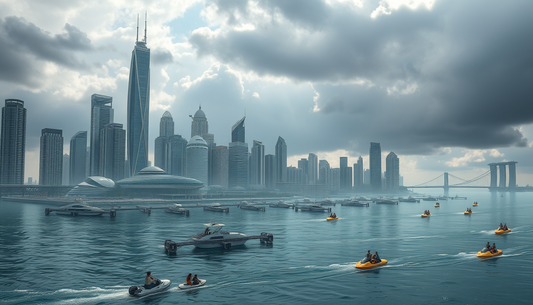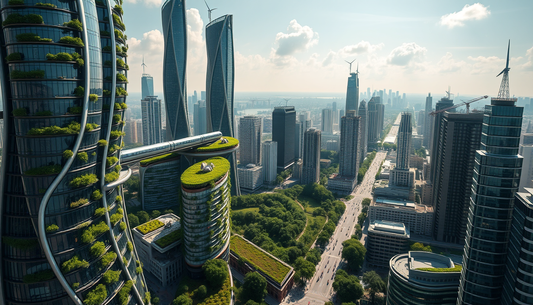As the world grapples with the challenges of climate change, the need to build more sustainable and resilient cities has become an urgent priority. Today, more than half of the world's population lives in urban areas, and this number is set to grow in the coming decades. It is therefore essential to rethink the way we design and build our cities, in order to reduce environmental impact and ensure a greener and more liveable future for all.
Sustainable Mobility: Rethinking Urban Transport
One of the key aspects in designing sustainable cities is mobility. Traditional transport systems, based on the massive use of combustion vehicles, are among the main contributors to greenhouse gas emissions in urban areas. To address this problem, it is necessary to promote greener mobility solutions, such as electric public transport, cycle paths and pedestrian paths.
Investing in sustainable mobility infrastructure not only reduces pollution, but also improves the quality of life of citizens. Safer and more accessible streets for pedestrians and cyclists encourage a more active and healthy lifestyle, contributing to the well-being of the community.
Green Architecture and Urban Planning
In addition to mobility, another key element in designing sustainable cities is architecture and urban planning. Buildings and public spaces must be designed to minimize energy consumption and environmental impact.
Some innovative solutions include the use of eco-friendly materials, the integration of renewable energy systems, such as solar panels and wind turbines, and the implementation of advanced energy efficiency technologies. In addition, the integration of green spaces and natural areas within cities not only improves urban aesthetics, but also helps regulate the microclimate, absorb carbon emissions and improve air quality.
Ecological Infrastructures and Urban Resilience
To address the challenges of climate change, cities of the future will also need to invest in green infrastructure and urban resilience solutions. This includes building stormwater management systems, creating artificial wetlands for flood control, and implementing natural cooling solutions, such as green roofs and walls.
These infrastructures not only help mitigate the effects of extreme weather events, but also offer additional benefits, such as promoting biodiversity and improving air and water quality.
Renewable Energy and Smart Grids
Another key aspect of urban sustainability is the adoption of renewable energy solutions and smart grids. Cities of the future will need to make the most of clean energy sources, such as solar, wind and geothermal, to meet their energy needs.
Furthermore, the implementation of smart electricity grids, capable of efficiently monitoring and managing energy production, distribution and consumption, will be essential to optimise the use of resources and reduce waste.
Community Engagement and Social Innovation
Finally, the creation of sustainable cities cannot be achieved without active community involvement and social innovation. Citizens must be informed, sensitized and encouraged to actively participate in decision-making processes and urban sustainability initiatives.
Furthermore, encouraging innovative solutions and green entrepreneurship, such as start-ups developing eco-friendly technologies and services, can help stimulate innovation and accelerate the transition to a more sustainable future.
In conclusion, designing sustainable cities requires a holistic and integrated approach, involving different aspects, from mobility to architecture, from infrastructure to renewable energy. By investing in innovative solutions and promoting community involvement, we can build greener, more resilient and liveable cities, helping to mitigate the effects of climate change and ensure a more sustainable future for all.







